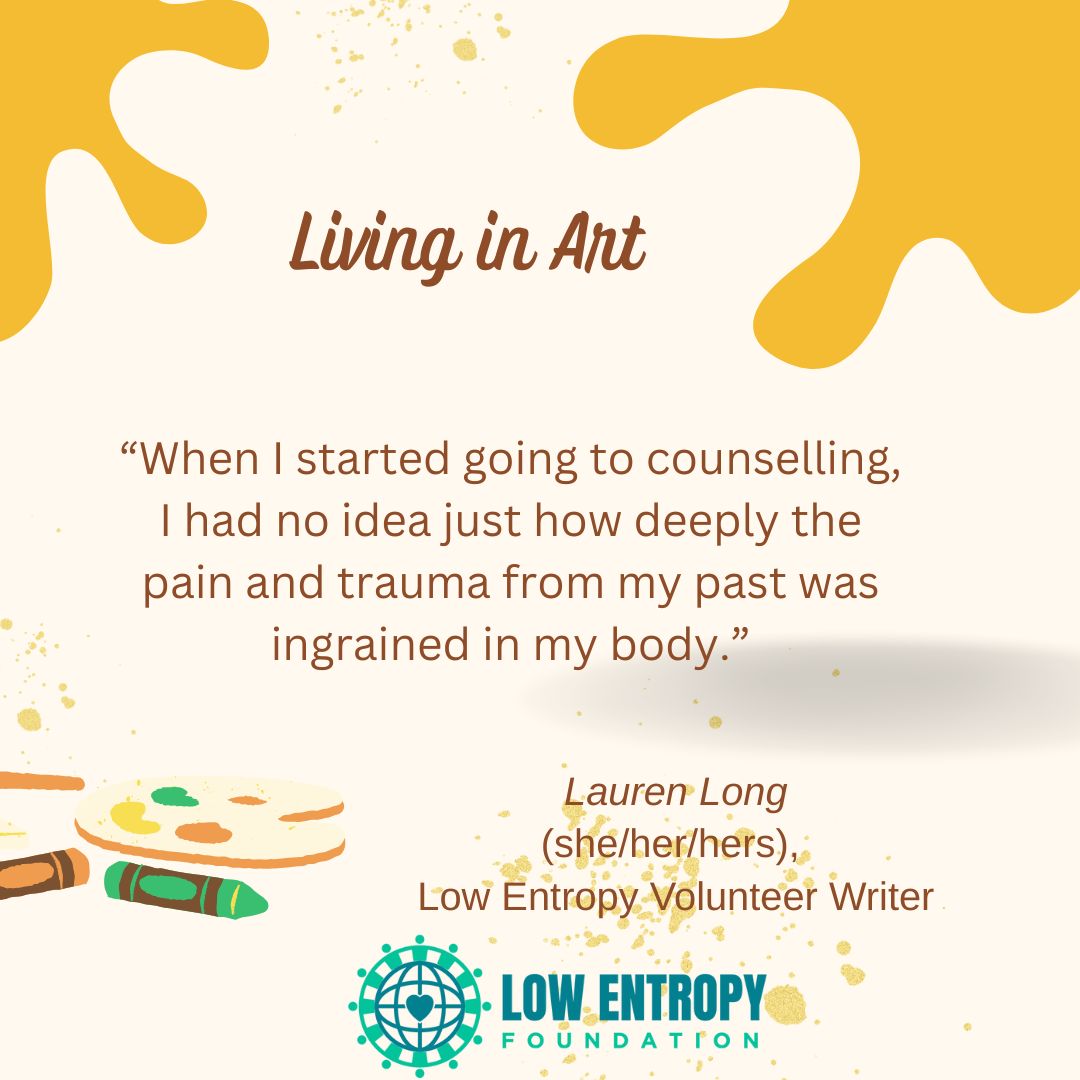Lauren Long (she/her/hers), Low Entropy Volunteer Writer
“You gotta resurrect the deep pain within you and give it a place to live that’s not within your body.
Let it live in art. Let it live in writing. Let it live in music. Let it be devoured by building brighter connections.
Your body is not a coffin for pain to be buried in. Put it somewhere else.” – Ehime Ora
I love this quote so much, and I had to scroll through my Instagram to find it because I knew it would be a great opener for this article. Our bodies do so much for us, and in healthy relationships between our bodies and us, we return the favour by eating healthy, drinking water and keeping up a regular exercise routine while indulging in the occasional treat.
But what about caring for our bodies through art? Art is therapy, and just like how our bodies need physical therapy to rehabilitate after an injury, our minds (and bodies!) need mental and emotional recovery.
The deep pain that my opening quote mentions is different for everyone, and some people don’t take any initiative to release it. Instead, they choose to become mired in it and they let the pain and misery control them and make everyone around them miserable.
When I started going to counselling, I had no idea just how deeply the pain and trauma from my past was ingrained in my body. The more sessions I attended, the more I unravelled the trauma web around my soul, but working through my issues by talking was only half the battle. After each session I would come home and write about my appointments in my journal.
I’d like to say I’ve kept that up, but sadly I fell out of the practice three years ago around the time of my sister’s wedding. At first it was because the weeks leading up to the wedding were action-packed, from attending the bachelorette party to coming down with COVID-19 the week before the wedding, and then when I recovered I dove straight into the last-minute wedding preparations, all the while keeping my sister calm and happy as certain family members tried to tell her what to do and dealing with the unexpected loss of one of my brother-in-law’s groomsmen and best friends, who passed away the week before the wedding.
After the wedding was over and the dust had settled, I did try to write in my journal, but found it overwhelming as I truly came to terms with everything that had happened over the last week and it felt like I was drowning in my own head. Journalling is a habit I would like to get back into and combine with the artistic avenues of colouring and pole dancing.
This past Valentine’s Day, I wrote and published “Showing Ourselves Self-Love: The Benefits of Colouring” to Empowered Prose and Ponders. Colouring offers all sorts of benefits, including stress management, the improvement of motor skills and brain function, distraction from negative thoughts, and more. After I had my counselling appointment in June, I came home and coloured for four hours. When I went downstairs, I told my parents that I was going to colour after every counselling appointment because of how much better I felt mentally and emotionally, even though I’d had a good, for the most part, counselling appointment.
Finally, pole dancing is another outlet I use for creativity, self-expression and emotional release. This art form and movement can be incredibly healing because not only does it allow dancers to reclaim their power and explore their sensuality in a safe space, it gives them the opportunity to transform their pain and emotions from past or present trauma into powerful pieces of healing and self-reclamation.
Pole dancing does not only change your physical appearance, toning and strengthening muscles and adding definition everywhere, it changes your outlook on life and improves your mental and emotional health while reducing the risk for heart attacks, heart disease and strokes, which in turn leads to low blood pressure. The respiratory system is also improved, and the risks for neurological diseases lower significantly because dancers are using their hippocampus, which is needed for remembering the countless movements, step sequence and dance routines that they learn.
For the longest time, I didn’t take care of myself mentally or physically. I sometimes wonder who I would have been had I reached out for help sooner and started going to counselling as a teenager, and what my life would have been like had I started pole dancing as a teen or in my early 20s instead of my late 20s. But you can’t turn back time, and these days, I’m focusing more on being grateful that I’m living my best life now and recognizing that without being my past self, I never would have reached the point where I am now.
—
Born and raised in Quesnel, BC, Lauren Long is a strong advocate for mental health and well-being, a voice for the pole community, a major Swiftie and a role model for positive body image. When she’s not writing, you can find her on the pole, on the training mats, or curled up with a good book or fanfiction.
—

